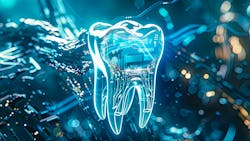Embracing evolution: How dental leaders navigate the shift from traditional to digital practices
How times are changing
Dentistry continues to seismically shift as digital technologies reshape patient expectations and operational norms. Experienced dental practitioners are at the forefront of this transformation, embracing innovations to align with the evolving needs of the profession and meet the demands of younger patients and other practitioners.
The face of dentistry is changing, too. A recent RTI report found the 2022 graduating class of dental students to be the most racially and ethnically diverse in history, with 48% identifying as non-white. This number exceeds that of both practicing dentists and the US population. Additionally, 53% of graduates were women.
The newest generation of dentists is also affecting practice operations. According to the 2023 RTI report, only 36% of actively practicing dentists were solo; most were part of a group practice. Thirteen percent reported affiliation with a dental service organization (DSO); this preference most common among early career and women dentists.
While young dentists seek dental organizations that offer corporate comforts and stability, their older colleagues are retiring from their profession earlier than before. A January 2022 analysis from the ADA found that the average retirement age for dentists has dropped to 67.9 years old, down from a peak of 69.1 in 2018.
What to expect from millennial dentists
Millennial dentists are more likely to enter dentistry using the DSO model rather than attempting to start their own practices. They also want to work in technologically savvy environments—specifically those with cloud solutions.
Scientific American notes that while dentists may continue to spend most of their time in an office, they will increasingly rely on new technologies, cameras, an Internet connection, and greater collaboration.
Millennials (dentists of the same age included) also demand more convenient dentistry, including evening and weekend appointment availability. They also highly value convenience-easy online scheduling, minimal wait times, and technology-backed practices. Moving forward with digital transformation is key. Continued advancements in digital dentistry are bringing about unprecedented changes in how dental practices operate, serve patients, and enhance patient experiences.
These preferences are the result of the uberization effect, the ability to get what you want quickly and with ease. Dental practice leaders are responding to this change and the new demands placed on their practice.
Enhanced patient experience
This shift in the dental industry comes with a clear motive: integrated technology enhances patient care. Ultimately, a tech-forward approach is essential for several reasons:
Diagnosing
Most notably, it helps improve diagnoses. X-rays, mirrors, and 3D imaging allow dentists to obtain more precise and detailed images of a patient's oral structures. This helps dentists accurately diagnose various issues, allowing them to detect problems early and provide appropriate treatment.
3D imaging techniques, such as cone-beam computed tomography (CBCT), also provide a comprehensive, three-dimensional view that dentists can use to assess the structure of teeth, bones, nerves, and surrounding tissues. This technology allows for more precise diagnoses and treatment planning, which improves patient outcomes and satisfaction.
Additionally, digital technologies afford minimally invasive procedures and precise restorations, enhancing patient comfort and satisfaction. For example, teledentistry and digital communication channels increase accessibility, allowing for remote consultations and follow-ups.
Patient education and satisfaction
Younger patients have used technology for their entire lives, so they know the latest tech can enhance their treatment planning. This is why many of them prefer to go to technologically advanced practices. Digital tools like intraoral cameras and 3D imaging—as well as emerging technologies like digital mirrors—facilitate patient education opportunities, leading to increased patient education and engagement in treatment plans.
Digitized mirrors, for example, provide detailed visuals of the oral cavity, providing a direct view of hard-to-reach areas and facilitating proper illumination during examinations and treatments. On-demand lighting can illuminate all portions of the mouth. A staple of dental care, digital mirrors can also capture records, including voice notes, and provide insights about a patient's oral care to ultimately streamline the examination process. In fact, they may be able to replace intraoral cameras in the future.
The capabilities of digital mirrors further enable point-of-care discussions with patients while chairside, thus increasing patient engagement and potentially boosting revenue capture.
Cameras can also capture high-quality images inside the mouth to show patients detailed views of their teeth and gums on a screen in real time. This visual aid helps patients better understand their oral health conditions, making it easier for dentists to explain treatment options and for patients to grasp the importance of various procedures.
Overall, these technological tools empower dentists to educate patients more effectively, increase their understanding of oral health issues, and actively involve them in the decision-making process regarding their treatment plans. This leads to improved patient satisfaction, better treatment outcomes, and healthier smiles.
Understanding patients' technological needs
To effectively cater to the needs of younger patients and stay abreast of technological advancements, dental practices must understand patient demographics and preferences. Strategies include:
- Utilizing digital tools for patient education
- Adapting to technological advancements
- Addressing oral health challenges through preventive care and innovative treatment options
The integration of digital dentistry offers a myriad of benefits. From increased precision and accuracy to enhanced patient experience and sustainability, the advantages are far-reaching, underscoring the importance of embracing digital innovation in dental care.
Collaboration between generations of dentists is also paramount in driving practice innovation and enhancing patient care. Strategies include:
- Promoting interdisciplinary collaboration
- Leveraging technology for integrated care
- Incentivizing innovation through partnerships with dental insurers and payers.
As the dental landscape evolves, dental practice leaders must embrace digital innovation to meet the needs of younger patients and ensure the sustainability of their practices. By integrating advanced technologies, fostering collaboration between generations of dentists—and prioritizing patient engagement—practices can position themselves as leaders in modern dental care, driving positive outcomes for patients and practitioners alike.
About the Author

Peter Khoury
Peter Khoury is the president and cofounder of Halo Dental Technologies. From a young age, Peter’s passion was about exploring ideas. Finding new and better ways of doing things was an obsession for him. That trait pushed him to study in Industrial Design. After practicing in the environment that he thought would fulfill him the most, he realized that something was missing. The desire to innovate was left out, so he knew he had to explore his entrepreneurial side. He started a business where he could bring ideas to life, and soon after came Halo. Halo allowed him to leverage his outstanding skills of conceptualization while having the positive impact he wanted to have on those around him. The dental industry is now home to him and he’s just getting settled in.

